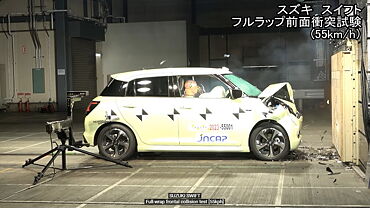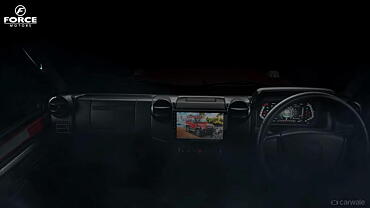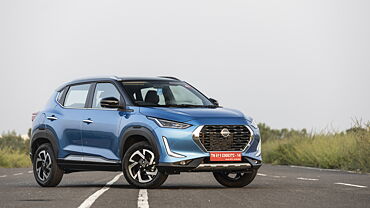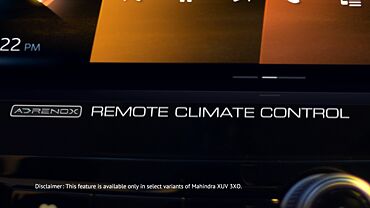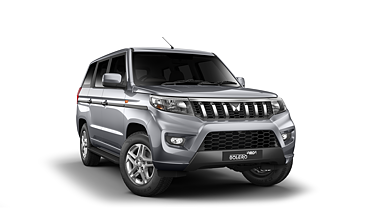
Opening
If you’re looking to buy a new sedan, there are a lot of reasons to be confused. There have been a lot of new entries in this segment, most popular being the Volkswagen Vento, Fiat Linea, Maruti SX4 and the newest Hyundai Verna Fluidic.
The Hyundai Verna was introduced by Hyundai Motors back in 2006 as an upgrade to the then luxury sedan Accent. Since then, in the last 5 years, the Indian Hyundai Verna has seen several variants and facelift models, the most recent being the Verna Fluidic.
This 2011, Hyundai Motors introduced its new premium C-Segment sedan, the Verna Fluidic. This new version is available in a 1.4 and 1.6-litre engine, in petrol and diesel along with a manual and automatic transmission. Thus, the Korean car maker, with its 8 variants offers a good range of options to the mid-segment buyer.
The Verna Transform was generally described as in need of a styling Botox … and the ‘Fluidic’ is the answer!
The New Verna follows the fluidic sculptor design philosophy, which has found its way into the design of various new mid-segment sedans now - a creation that definitely has the segment leaders at work.
The new sculptor design philosophy is a lot more pleasing to the eye than the older Verna. Armed with its contemporary, sharp, dynamic, and luxurious looks, the Fluidic will definitely demand a second look from you.
Of course, we couldn’t just judge a book by its cover and not flip through the pages, so we decided to review the Verna Fluidic over a 400 KM drive from Mumbai to Pune and back via Lonavla to Mumbai.
We drove the 1.6 diesel, automatic Verna, the top of the line variant. Interestingly, there is no real competition for this car, as the SX4 automatic is only available in petrol, while the Vento and Linea are not available in automatic transmissions.
In the following we have provided some comparison against the Vento, Linea and SX4 where applicable, but it should be noted that this is not a perfect comparison.
Color options available in Verna RB include include Sleek silver, Carbon Grey, Stone beige, Phantom Black, Crystal white, and Purple Fantasia. It is to be noted that one extra color, Purple, has been introduced in the new version.
We have done a first impression review of the Hyundai Verna before with more details. You can read our Hyundai Verna review here.
Appearance Exterior
The Verna Fluidic is a very appealing car compared to its predecessor. Its radical styling looks sharp and curvy like a super model. The lines on the car are blended in to stretch from the front fender to the rear giving it a very aerodynamic look and feel. Even so, the door handles are well incorporated in the design.
I found the tail lights looking like the last generation BMW 5 series, but they look good and are well wrapped around to go with the overall design. To add, Hyundai have added 16 inch tubeless tires on eight spoke alloys. The flared out arches over the wheels further add to the car’s side profile, giving it a very balanced look. The electrically adjustable rear view mirrors have a sharp design and house the LED turn indicators.
The Hyundai trademark hexagonal grill is accentuated by the prominent Hyundai logo. The headlights, which Hyundai calls the eagle eyes are well wrapped around the front of the car, giving the Verna a very distinctive look compared to the other cars in its segment. They look bold and clear. However, I didn’t find the lighting great and it could have been a little more powerful - a set of projector lamps probably would have been great. The boomerang shaped fog lamps look nice and are well designed to go with the car’s flow but also were not powerful enough to light up the road.
The thick waist line of the Verna makes it looks a bit chunky towards the rear - the rear end looks totally different from the front or side. While the side and front profile give the car a very elegant and sporty look, the rear seems to be a bit massive, very different from other cars in its segment. The bulky boot is blended in well with the slanting glass. The trunk lid spoiler, reverse parking sensors, the reflectors, the chrome garnish and the reverse camera are also well placed. However, the bulky rear and sloping screen tend to hinder rear vision. The coupe like roof line will help keep the car looking younger but at the same time it tends to cuts down on the head room at the rear. The chrome tip dual exhaust adds to the character of the car.
The Fluidic is quite a head turner! Probably since it’s been just recently launched, everyone seemed curious about it. We got a lot of eyeballs, especially on the Mumbai- Lonavla-Pune highway. An evil laugh came up especially as I saw other Hyundai Verna owners eying the Verna Fluidic - “why didn’t I wait for this car?!!!?”
Let’s compare the new Verna’s looks with its competition.
In comparison to the Verna, the Fiat Linea is quite a big looking sedan. The head lamps of the Linea tend to take away most of the bulky look in the front whereas the rear end has been nicely integrated into petal shaped tail lamps with a LED feature in them.
The Vento looks very elegant and attractive from the outside. It has a contemporary look and its styling goes well with the body’s curves and lines. The ride height seems perfect for our type of roads.
Maruti SX4 on the other hand is muscular and has a good ride height for the bad roads, but the styling on the exteriors looks very plain and old.
If I have to pick a car based on exterior looks, Hyundai Verna is my first choice, the second being Linea, then the Vento and SX4 being fourth.
Appearance Interior
The Interiors of the Verna are very impressive and feel fresh and rich. The special beige and wood trim looks very modern, and the dashboard doesn’t look cheap or plasticky, but rather well sculpted.
The Verna’s leather feels smooth, and the wooden garnish on the doors adds to the elegance of the cabin. The steering wheel is sporty like the Honda City, and is comfortable especially on long drives.
The new Verna’s A pillar is perfectly placed and doesn’t hinder your vision; you can clearly see on-coming cars while turning on the ghats. The cabin is well lit at night, the map lamps are spot on and don’t seem disturbing while driving.
The Verna’s cabin is not the quietest of all, and the engine can initially be heard within the cabin, but it quickly settles downs as the revs move higher. The cabin could have used a bit more of sound reduction mats.
The illuminated push button start is placed on the left of steering wheel and it’s the first in its class. The centre console then houses the climate control and music system. The climate control comes with an air cluster ionizer to clean air inside the car for an odorless cabin; it does take time to cool the car though. The vents are large and flow very well with the dashboard.
The rear and front screens of the Verna have separate defogger controls. The dashboard backlit displays are in white and blue and the intensity can be adjusted. The instrument panels display the trip meter, engine running time, average fuel mileage, speed indicator, outside temperature etc. The gear knob has a mixture of leather and chrome.
The controls for the locks, mirrors, windows are well placed for easy access for the driver but I couldn’t see what I was doing in the dark, and they could have been backlit.
The dashboard further houses the ports for your iPod, usb and aux-in, along with bluetooth for mobile and bluetooth audio streaming. The steering has integrated controls for the music system and mobile connectivity. The 4 Speakers music system is nothing out of the blue and the audio quality isn’t great, although it auto adjusts the volume of the music as per the driving speed which is something you see only in high end cars.
The breakdown indicator switch is also incorporated as a part of the design.
Let’s compare the new Verna with its competition.
The Linea’s cabin feels nice and airy, and solid and classic like a well made Italian suit. The car carries a retro look cluster which grabs your attention, and the steering wheel is wrapped in all black leather though it seems to close to the body.
The material used in Volkswagen Vento is of very good quality and comes in grey and beige tones, a bit understated but elegant. The dials are nice and clearly visible and the central console is neatly arranged and has a slight tilt towards the driver, making crucial controls well within arm’s reach. The dash line seems a bit high and so does the boot lid. Overall, the interior is pleasing to eyes and is spacious.
The interiors of the Maruti SX4 don’t look as great as the exterior of the car, and there seems to be a disconnect. The steering wheel is the same used across new Maruti cars, and the center console houses the music system and the climate control which have a feel good factor to them. The front seats are comfortable and the good ride height makes visibility good from driver’s seat. The gadgetry and the quality of the plastics and fabric is average, though the leg room is good at front and rear.
Overall, amongst the 4 cars the Verna tops with the very plush, modern interior, second would be the Vento, third the Linea, and fourth the SX4.
The Verna Fluidic offers a lot of goodies as compared to its competitors. The Smart Key with button start is a new feature not seen in any of the cars in this segment, where sensors sense the presence of the car keys in permissible limit and the ignition can be started with the press of a button.
The car comes fully loaded with a rear parking system which helps in parking in tight places; it provides a visual guide in the electro-chromic rear view mirror where a camera helps to align the car in exact position while parking. Another excellent feature which is seen in high end cars is that the rear view mirror automatically senses and reduces light intrusion from rear vehicles and reduces the induced glare, which helps the driver for easy judging of rear vehicles while driving in nights.
The Verna also comes with a lot of safety features including dual airbags and even curtain airbags are available in higher versions, thus ensuring complete safety and comfort for the passengers.
Other features in the Verna include Impact sensing auto door unlocking, ABS (Anti-lock Braking System) and EBD (Electronic Brake Force Distribution), pre-tensioner seat belts, Engine Immobilizer, Child Safety Door Locks, Front/Rear Seatbelts, Collapsible Steering and Crumple Zones., Disk brakes all around, Tubeless Tires, Roof Antenna, Rear parking sensors, Bluetooth connectivity, Fully automatic Climate control with clean air Ionizer, Rear view camera, Front map lamps, Luggage Net, Electrically Adjustable Rear View Mirror, Sunglass holder, Driver & Passenger vanity mirror, iPod cable, and Fog Lamps.
The Fluidic’s climate control system is equipped with an Ionizer, Inner mirror rear parking camera and lot of other stuff. The Linea makes do without a cooled glove box as also the rear parking camera. As for the Vento, it cannot even hope to match these features while being nearly available at the same price.
The Fluidic comes with a big, spacious cabin with a very comfortable feel to it. The front is good for six footers with decent head and elbow room. The rear feels comfortable because of the flat floor and it can easily accommodate 3 passengers. The legroom is good and isn’t uncomfortable at the rear, even with the front seat put way back. However, the high window line in the rear tends to rob the feeling of space a little.
The Verna comes with nice wide doors which allow ease getting in and going out. However, the seating in the front didn’t feel firm; the passenger seat was vibrating at high speeds, though this could have been a temporary issue. The seat is snug and gives your shoulders support making it feel sporty. There is ample of elbow room on both sides. Further, the front seats come with a sliding armrest, which even though it slides back and forth doesn’t provide much support to your arm.
The angle of the seats in the rear is average - you would feel a bit tired after returning from a long drive. It gets worse for the person sitting in the centre, as the hard arm rest makes it uncomfortable. Fortunately, headrests of both front and rear seats are height adjustable.
The height of the driver seat is adjustable and the seat travel is quite generous - for once my knees didn’t seem to rub the dashboard. I found the driving position spot on and you get a perfect panoramic view of the road ahead.
In the Fiat Linea, for me the steering wheel feels too close to the chest making it a bit uneasy. The SX4 has tall proportions which ensure that getting in and out of the cabin isn’t a hassle. The Verna has the flattest floor of all the 4 cars here. As for the Linea, it is a bit on the lower side and getting in and out seems to be a bit of problem. Out of the 4 cars, the SX4 has the best seating comfort.
Boot space in the Verna is huge and the opening is large. It comes with a luggage net, a nice thing to keep those small bags from being tossed around. Storage space felt standard, though the way it’s designed makes the difference. With respect to the boot space, the Verna, Linea and the Vento is around 500 liters, while the SX4 come with a 505 liter capacity.
In the Verna, storage space is decent; the glove box is nice and deep. The Front and rear arm rests also come with storage. The back seat center arm rest doesn’t have any cup or bottle holders and could make it a bit uncomfortable for the passenger when folded. The car does not have ashtrays - a drawback for smokers. The sunglass holder is very well placed and looks sleek.
The Linea comes last for the optimal use of space. The Verna comes in third as far as space is concerned. The Vento comes in second as far as where comfort is measured and the SX4 comes in first with the maximum space.
Performance Drive
We tested the top-of-the-line 1.6-litre CRDi SX, which comes with a 4 speed automatic transmission. The engine is a 1582cc, 4-cylinder common rail diesel motor, which puts out a healthy 128bhp@4000rpm and 260Nm@1900rpm of torque.
On the other hand, the Volkswagen Vento comes with a 1.6 liter common rail turbo engine which develops 105 Ps of power and 250 Nm of torque, the SX4’s DDiS, comes with 90 Ps of power and 200 Nm of torque and 5 speed transmissions, while the Fiat Linea comes with a 1.3 Liter, 1248cc, Multijet Diesel which puts out 93 bhp @ 4000 rpm and 209 Nm @ 2000 rpm.
Clearly, among the 4 diesel cars, the Verna is the most powerful of all.
The Verna comes with 4 speed auto gears which are smooth but come with a turbo lag up to 2000rpm after which the VGT (Variable Geometry Turbo) kicks in and the car accelerates instantly though a small jerk. The engine seems refined and the drive is smooth. The gearbox is tall and easy to use. The mid-range is packed with a punch and overtaking is not a problem but the 4 speed auto box does not do any justice to the sporty engine - a 5 speed would have been better and probably have taken care of the performance figures. It seems for now that the engines have been tuned to deliver good fuel efficiency without compromising much on power.
The Hyundai Verna is easy to drive within the city, and it has ample of power and pickup to squeeze through traffic.
The ride is smooth at low to medium speeds. The steering is light which makes it easy to maneuver around in traffic. However, at high speed handling the steering feels light - I didn’t feel comfortable at high speeds, as it tends to make you unsure of how much you should turn the steering, especially in cases of overtaking.
The car’s suspension absorbs bumps with ease at city speeds and it’s much firmer than the earlier Verna, though comfortable. The suspension could have been made stiffer for high speeds, especially taking in consideration the speeds that the car is capable of doing. The car tends to bottom out when loaded and bobs at high speed. With the soft suspension, you can’t take risk of high speed corners and at bends it tends to make you nervous. On the ghats, the car moved without any extra effort.
Braking is impressive and powerful – the car comes equipped with discs for all 4 wheels. It brings the car to a halt within no time. The hand brake felt a bit clumsy, and the car refused to stay put with the hand brake pulled full on a slope. The car is also loaded with features like ABS (Anti-lock Braking System) and EBD (Electronic Brake Force Distribution).The SX4 comes with EBD and ABS paired with drums at the rear and discs in the front. The Vento comes with only ABS.
The New Verna Fluidic ARAI’s certified fuel efficiency comes in at 22.32 kmpl. For us, within the city, we got an average of 14kmpl while on the highway we got about 18kmpl which translates to an overall 15.8 kmpl with AC, quite a bit lower than the ARAI value.
With the Volkswagen Vento TDI we have seen an overall 14.8 kmpl against the ARAI figure of 20.5 kmpl while for the Maruti SX4 DDiS, it’s a real world figure of 14.6 stacked against the ARAI certified 21.5 kmpl. Finally, the Fiat Linea returns an overall 15 kmpl.
There were two instances where the mileage took a major hit – the first was within the city thanks to our bumper to bumper traffic, where we got 10 to a liter and the other on the highway. When we clocked 180 kmph, we got 14.3 kmpl. The AC factor didn’t make any different to the power and mileage. The fuel tank has a capacity of 43 liters.
With a 43 litre fuel tank, you can count on a range of about 600 KMs.
Tech Specs
| Technical Specifications | ||
| Make | Hyundai | |
| Model | Verna | |
| Variant | ||
| Engine | Petrol | Diesel |
| Engine Capacity (cc) | 1599 | 1493 |
| Power (PS) | 103 | 110 |
| Torque (NM) | 146 | 235 |
| Gears | 5/M | 5/M |
| Ground clearence (mm) | 170 | 170 |
| Length (mm) | 4300 | 4300 |
| Width (mm) | 1695 | 1695 |
| Height (mm) | 1490 | 1490 |
| Wheel Base (mm) | 2500 | 2500 |
| Fuel Tank capacity (l) | 45 | 45 |
Features
| Features | 1.6 VTVT | 1.6 SX VTVT | 1.5 CRDI VGT | 1.5 SX CRDI VGT | 1.5 SX CRDI VGT, AT |
| Power Steering | Yes | Yes | Yes | Yes | Yes |
| Power windows | Yes | Yes | Yes | Yes | Yes |
| Central locking | Yes | Yes | Yes | Yes | Yes |
| A/C | Yes | Yes | Yes | Yes | Yes |
| Alloy Wheels | No | Yes | No | Yes | Yes |
| Woodgrain interiors | Yes | Yes | Yes | Yes | Yes |
| Leather wrapped steering wheel | No | Yes | No | Yes | Yes |
| 2 DIN MP3 Player | Yes | Yes | Yes | Yes | Yes |
| Sunglass Holder | No | Yes | No | Yes | Yes |
| Driver seat armrest | No | Yes | No | Yes | Yes |
| Keyless entry | No | Yes | No | Yes | Yes |
| Fog Lamps | Yes | Yes | Yes | Yes | Yes |
| Immobiliser | Yes | Yes | Yes | Yes | Yes |
| ABS With EBD | No | Yes | No | Yes | Yes |
| Average fuel efficiency | 14 | 14 | 17 | 17 | 15 |
| Ex Showroom price Bangalore | 6.8 | 7.57 | 8.13 | 8.64 | 9.29 |
| Onroad Price Bangalore | 8.17 | 9.09 | 9.73 | 10.34 | 11.11 |
Competition All Specs
| Specifications |
Hyundai
Verna |
Fiat
Linea |
Chevrolet
Optra Magnum |
Ford
Fiesta |
Maruti Suzuki
SX4 |
Honda
City |
| Variant | 1.6 SX VTVT | Emotion | 1.6 LT | 1.5 V | Zxi | 1.5 V MT |
| Engine Capacity (cc) | 1599 | 1368 | 1598 | 1596 | 1586 | 1497 |
| Power (PS) | 103 | 90 | 104 | 101 | 104 | 118 |
| Torque (NM) | 146 | 115 | 148 | 146 | 148 | 146 |
| Gears | 5/M | 5/M | 5/M | 5/M | 5/M | 5/M |
| Key Features | ||||||
| Power Steering | Yes | Yes | Yes | Yes | Yes | Yes |
| Power windows | Yes | Yes | Yes | Yes | Yes | Yes |
| Central locking | Yes | Yes | Yes | Yes | Yes | Yes |
| A/C | Yes | Yes | Yes | Yes | Yes | Yes |
| Alloy Wheels | Yes | Yes | Yes | Yes | Yes | Yes |
| Leather Wrapped Steering wheel | Yes | Yes | Yes | Yes | No | Yes |
| 2 DIN MP3 Player | Yes | Yes | Yes | Yes | Yes | Yes |
| Sunglass Holder | Yes | Yes | Yes | Yes | Yes | Yes |
| Driver seat armrest | Yes | Yes | Yes | Yes | Yes | Yes |
| Keyless entry | Yes | Yes | Yes | Yes | Yes | Yes |
| Fog Lamps | Yes | Yes | Yes | Yes | Yes | Yes |
| Immobiliser | Yes | Yes | Yes | Yes | Yes | Yes |
| ABS With EBD | Yes | Yes | Yes | Yes | Yes | Yes |
| Air Bag | No | 2 | 1 | 2 | 2 | 2 |
| Average fuel efficiency | 14 | 14 | 14 | 14 | 16 | 16 |
| Ex Showroom price Bangalore | 7.57 | 7.74 | 9.71 | 7.44 | 7.95 | 9.32 |
Conclusion
Hyundai have taken the bull by its horn with its new Hyundai Verna. The new design of the body shape is a major improvement boosting image of car and allows it to compete with cars in range of 9 to 13 Lakh on road. There have been a lot of improvements with respect to technicality, comfort and features.
A wide range of choices with respect to engine selection, features, and thus price may force competition to increase its choices too, and it will be worthwhile seeing how both competitors and customers respond to the same.
As for the pricing, the Hyundai Verna “Fluidic” CRDI price in India is Rs 10.98 lakh. The Fiat Linea Multijet has priced its top end variant at Rs 9,06,320 while the Maruti SX4 DDiS is at Rs 9.98 lakh. Finally, the Volkswagen Vento TDI is priced at Rs 10.61 lakh. All these prices are ex-show room, Mumbai. Thus, the pricing of the Automatic Verna Fluidic is quite attractive relative to the competition, indeed!
For a potential buyer who is looking for a mid range diesel automatic car, he shouldn’t (and can't) look any further than the Verna Fluidic.



